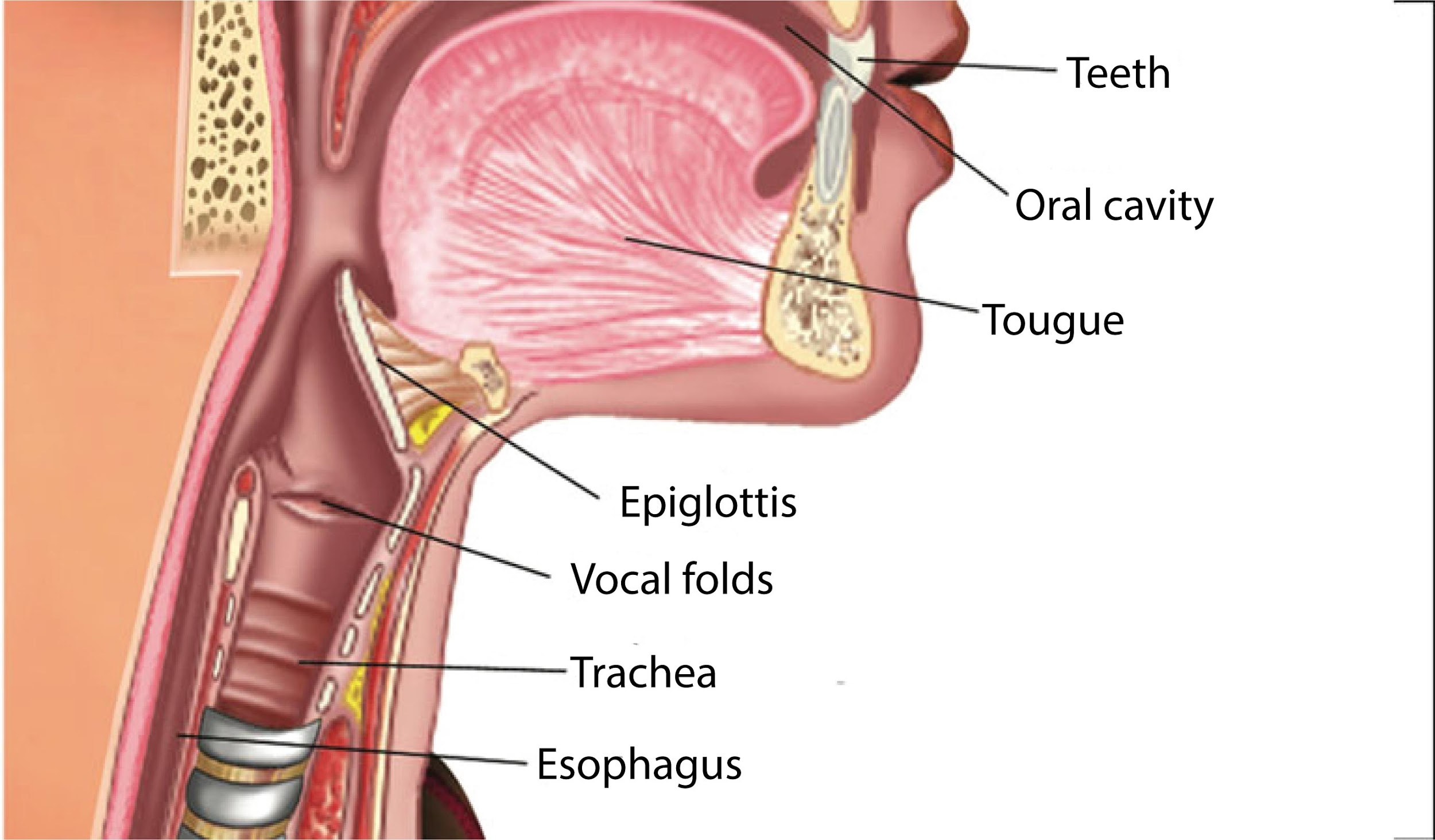
The structure which prevents the entry of the food particles into the respiratory passage is
(a)Epiglottis
(b)Glottis
(c)Larynx
(d)Pharynx
Answer
577.8k+ views
Hint: They are made from elastic cartilage covered with a mucous membrane, attached to the doorway of the larynx. They project upwards and backward behind the tongue and the hyoid bone.
Complete answer:
The structure which prevents the entry of the food particles into the respiratory passage is Epiglottis. It’s an outsized leaf-like structure present on the highest of the larynx. It's open during breathing, allowing air into the larynx. During swallowing, it closes to stop aspiration of food into the lungs, forcing the swallowed liquids or food to travel along the esophagus toward the stomach instead. It’s thus the valve that redirects movement to either the trachea or the esophagus.
Additional Information: The epiglottis is leaf-like elastic cartilage. Its narrow base is named the stalk (petiolus) and it's attached to the laryngeal prominence of Adam's apple via an elastic ligamentous band called the thyroepiglottic ligament. The lateral margins of the epiglottis are attached to the arytenoid cartilages of the larynx via the aryepiglottic folds. Each fold contains the aryepiglottic muscle, which plays a crucial role within the movements of the epiglottis. The higher end of the epiglottis is free and it projects posterosuperior from the stalk, passing anterior to the laryngeal inlet and behind the body of the hyoid bone and the bottom of the tongue.
So the correct option is ‘A’.
Note: The epiglottis was noted by Aristotle, although the epiglottis' function was first defined by Vesalius in 1543. The epiglottis also helps with some features of sound creation in certain languages. Epiglottitis is characterized by inflammation and swelling of epiglottis. It’s a potentially life-threatening illness.

Complete answer:
The structure which prevents the entry of the food particles into the respiratory passage is Epiglottis. It’s an outsized leaf-like structure present on the highest of the larynx. It's open during breathing, allowing air into the larynx. During swallowing, it closes to stop aspiration of food into the lungs, forcing the swallowed liquids or food to travel along the esophagus toward the stomach instead. It’s thus the valve that redirects movement to either the trachea or the esophagus.
Additional Information: The epiglottis is leaf-like elastic cartilage. Its narrow base is named the stalk (petiolus) and it's attached to the laryngeal prominence of Adam's apple via an elastic ligamentous band called the thyroepiglottic ligament. The lateral margins of the epiglottis are attached to the arytenoid cartilages of the larynx via the aryepiglottic folds. Each fold contains the aryepiglottic muscle, which plays a crucial role within the movements of the epiglottis. The higher end of the epiglottis is free and it projects posterosuperior from the stalk, passing anterior to the laryngeal inlet and behind the body of the hyoid bone and the bottom of the tongue.
So the correct option is ‘A’.
Note: The epiglottis was noted by Aristotle, although the epiglottis' function was first defined by Vesalius in 1543. The epiglottis also helps with some features of sound creation in certain languages. Epiglottitis is characterized by inflammation and swelling of epiglottis. It’s a potentially life-threatening illness.

Recently Updated Pages
Why are manures considered better than fertilizers class 11 biology CBSE

Find the coordinates of the midpoint of the line segment class 11 maths CBSE

Distinguish between static friction limiting friction class 11 physics CBSE

The Chairman of the constituent Assembly was A Jawaharlal class 11 social science CBSE

The first National Commission on Labour NCL submitted class 11 social science CBSE

Number of all subshell of n + l 7 is A 4 B 5 C 6 D class 11 chemistry CBSE

Trending doubts
Differentiate between an exothermic and an endothermic class 11 chemistry CBSE

10 examples of friction in our daily life

One Metric ton is equal to kg A 10000 B 1000 C 100 class 11 physics CBSE

Difference Between Prokaryotic Cells and Eukaryotic Cells

1 Quintal is equal to a 110 kg b 10 kg c 100kg d 1000 class 11 physics CBSE

State the laws of reflection of light




